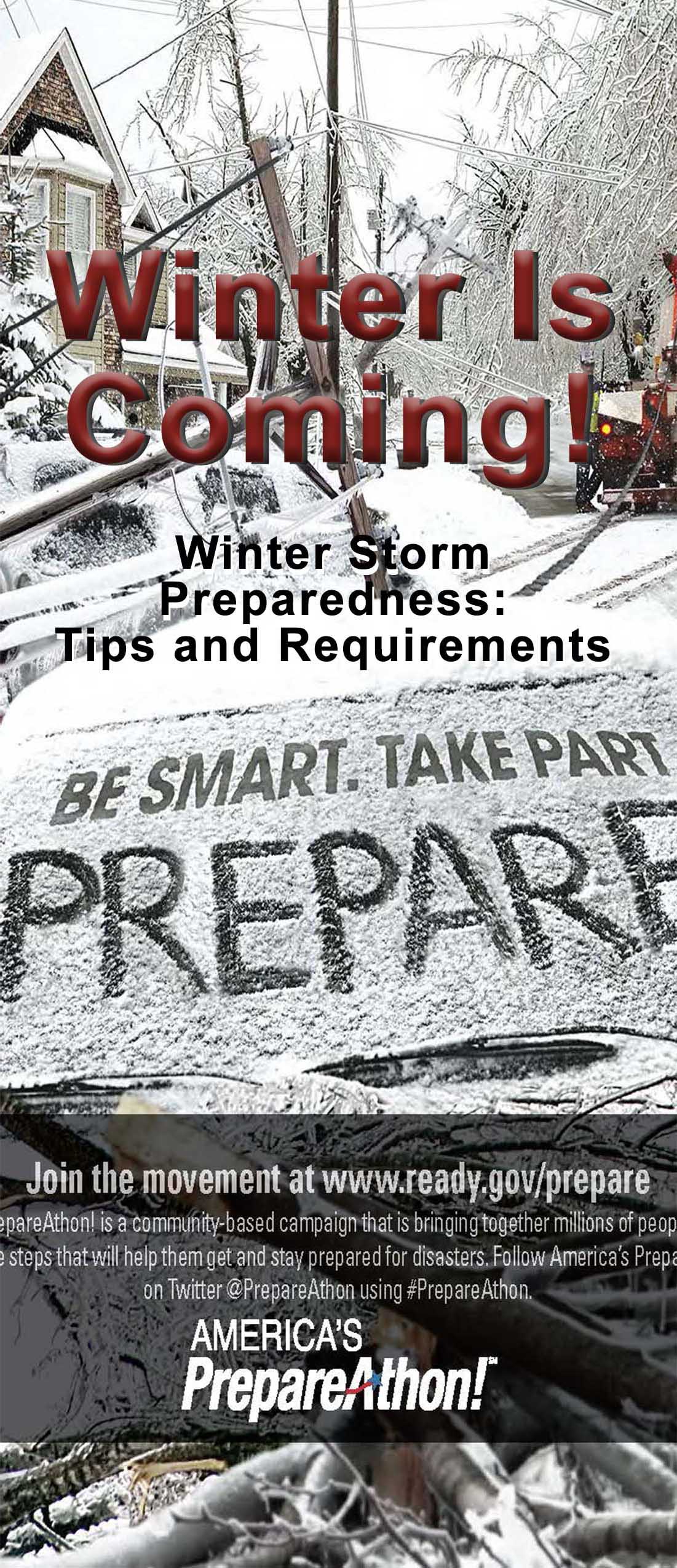With the coming of the winter season, we will soon be facing earlier nights, freezing temperatures, and winter storms. Preparing ahead of time will ensure that you don’t get caught short and unprepared to weather everything that winter can throw at you.
Streetlight Outages

PSE&G reports that with darkness descending earlier, they are getting more complaints about streetlight outages. To report an outage, log in to My Account or call 1-800-436-PSEG (7734). Please provide two of the following three pieces of identifying information: the nearest cross street, pole number, and/or nearest address. Report a Streetlight Outage.
Winterize & Prepare Your Home Before the Cold Weather Arrives
The following checklist offers you a few suggestions for tasks that should be accomplished before the cold weather hits.
- Clean out your gutters. Be sure that you direct the thousands of gallons of water that descend upon your roof each year away from your home. You don’t want to end up with leaks and damages. This is the time to clean out your gutters or replace them if need be.
- Don’t forget to caulk and weatherstrip your doors and windows. This will help keep your heating costs down and increase the comfort level in your home up. For more information about weatherstripping go to Energy.gov.
- While we’re talking about the comfort level in your home, don’t forget to take care of your furnace. It is recommended that you clean/replace your filters at least every 90 days. With a dirty filter your furnace will work harder and less efficiently. This means that parts may wear out quicker or need repairs. It’s a good idea to get your HVAC technician to give your furnace an annual service check. Be sure to include any alternative heating sources, such as fireplaces, wood or coal burning stoves, or space heaters in that check-up.
- Additional tips for increasing the interior comfort level of your home include insulating your walls and attic, install storm windows (or covering with plastic).
- Don’t forget to drain your outdoor faucets. This means draining and disconnecting all garden hoses from your outdoor faucets to prevent water from freezing and bursting any pipes.
- Change your batteries in your smoke detectors and carbon monoxide devices. We usually add this advice on to our Daylight Savings Time reminders, but since you’re already working on winterizing, you can add this to your checklist.
- Bring the outdoor furniture in or cover it with a waterproof cover. This will increase the life expectancy of your furniture and save you time and money in the long run.
- Fix cracks and seal your driveway. Water can get into these cracks, expand, and make those cracks even bigger. This will decrease the life expectancy of your drive and cause eventual replacement costs.
- Check out your snow blower before the snow hits. When the first winter snowstorm hits, you don’t want to find out that it isn’t working, and you need to buy a new one.
Be Storm Aware - Prepare!
We also want to recycle our winter storm preparedness guidelines. A winter storm can last a few hours or several days; knock out heat, power, and communication services; and place older adults, young children, and sick individuals at greater risk. The best time to prepare is now, before the actual need arises. The United States Department of Homeland Security at their ready.gov portal offers the following general storm preparedness recommendations:
- Familiarize yourself with winter storm warning procedures.
- Purchase sand or kitty litter for traction on walkways and Calcium Chloride for melting ice.
- Make sure that your heating fuel is topped off.
- Listen to local officials. Sign up for the Swift911 Community Notification System from Ewing Township via text, phone, or email.
Disaster Readiness
General disaster readiness preparations are invaluable no matter what time of year or what the emergency.
- Prepare emergency kits for your home, work, and the car.
- Have flashlights and extra batteries on hand.
- Have a portable, battery-operated radio with extra batteries.
- Make sure your first aid kit is up-to-date and that your prescriptions are refilled.
- Have a one-week supply of food on hand (include non-perishable items in case the power goes out).
- Keep your gas tank full to help avoid ice in the tank and fuel lines.
- Be prepared in case you get stuck while driving. Keep a warm blanket in the car along with a snow shovel and some sand or kitty litter.
- Practice your emergency communications plan.
- Don’t forget the needs of your pets.
Check out our Winter Is Coming PDF for Ewing-centric information and winter preparedness tips.